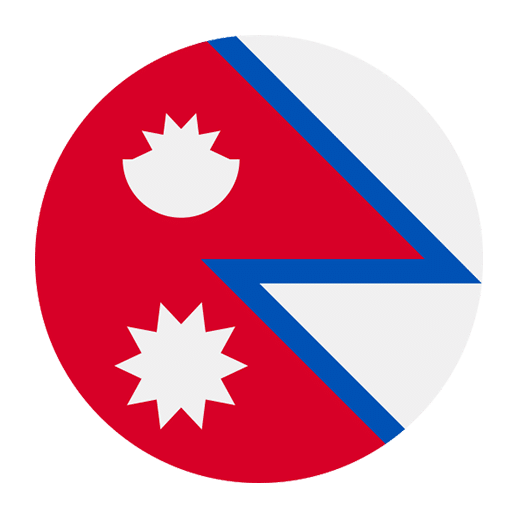Learning a new language can be both an exciting and challenging endeavor, especially when that language is not widely spoken or taught, such as Nepali. Nepali, the official language of Nepal, is spoken by over 17 million people and has its own unique script, grammar, and cultural nuances. Fortunately, in the digital age, there are numerous apps available to aid in learning Nepali. These apps come with their own sets of advantages and disadvantages. This article will delve into the various Nepali language learning apps, discussing their pros and cons to help you make an informed decision on which app might be best for you.
Popular Nepali Language Learning Apps
Before we dive into the specifics, let’s first list some of the popular Nepali language learning apps available today:
– Duolingo
– Drops
– Memrise
– Simply Learn Nepali
– Learn Nepali by Simya Solutions
– Mango Languages
– Clozemaster
Each of these apps offers different approaches and resources for learning Nepali, making it essential to understand their strengths and weaknesses.
Duolingo
Pros:
1. **Gamified Learning:** Duolingo turns language learning into a game, making the process engaging and fun. Users earn points and progress through levels, which can be highly motivating.
2. **Structured Lessons:** The app offers well-structured lessons that gradually increase in difficulty. This ensures a steady progression in language skills.
3. **Accessibility:** Duolingo is available for free, although it offers a premium version for an ad-free experience and additional features.
4. **Community Support:** Duolingo has a large community of users who can help each other through forums and discussions.
Cons:
1. **Limited Vocabulary:** For less commonly taught languages like Nepali, the vocabulary and phrases available might be limited compared to more widely spoken languages.
2. **Lack of Depth:** Duolingo’s lessons may not delve deeply into complex grammar rules or cultural contexts, which are crucial for true language proficiency.
3. **Pronunciation Practice:** While Duolingo offers listening and speaking exercises, the pronunciation practice may not be as robust or accurate for Nepali.
Drops
Pros:
1. **Visual Learning:** Drops focuses on visual learning, using images to help users associate words with their meanings. This can be particularly effective for visual learners.
2. **Short Sessions:** The app is designed for short, five-minute learning sessions, making it easy to fit into a busy schedule.
3. **Wide Vocabulary:** Drops offers a wide range of vocabulary, which can be useful for building a strong foundational lexicon in Nepali.
Cons:
1. **Limited Grammar Instruction:** Drops primarily focuses on vocabulary and does not offer in-depth grammar lessons, which are essential for constructing sentences and understanding language structure.
2. **Subscription Model:** While the app offers a free version, access to the full range of features requires a subscription, which might not be feasible for all learners.
Memrise
Pros:
1. **User-Generated Content:** Memrise allows users to create and share their own lessons, which means there is a wide variety of content available, including less commonly taught languages like Nepali.
2. **Multimedia Resources:** The app uses a mix of text, audio, and video to enhance learning, catering to different learning styles.
3. **Spaced Repetition:** Memrise employs spaced repetition algorithms to help reinforce vocabulary and ensure long-term retention.
Cons:
1. **Inconsistent Quality:** Since much of the content is user-generated, the quality can vary significantly. Some lessons may be excellent, while others may lack accuracy or depth.
2. **Limited Grammar Focus:** Similar to Drops, Memrise focuses more on vocabulary than grammar, which can be a drawback for learners seeking comprehensive language instruction.
Simply Learn Nepali
Pros:
1. **Phrasebook Approach:** Simply Learn Nepali offers a phrasebook with commonly used phrases and expressions, which can be highly practical for travelers or beginners.
2. **Audio Pronunciation:** The app includes audio recordings by native speakers, helping users to learn correct pronunciation and intonation.
3. **Offline Access:** Simply Learn Nepali can be used offline, making it convenient for learning on the go without needing an internet connection.
Cons:
1. **Limited Content:** The app focuses on basic phrases and vocabulary, which may not be sufficient for learners aiming for advanced proficiency.
2. **No Interactive Features:** Simply Learn Nepali lacks interactive exercises or games, which can make the learning experience less engaging.
Learn Nepali by Simya Solutions
Pros:
1. **Comprehensive Lessons:** This app offers a variety of lessons, including vocabulary, phrases, and grammar, providing a more well-rounded learning experience.
2. **Interactive Features:** The app includes quizzes and flashcards to reinforce learning and test comprehension.
3. **User-Friendly Interface:** Learn Nepali by Simya Solutions has an intuitive and user-friendly interface, making it easy to navigate and use.
Cons:
1. **Paid Features:** While the app offers some free content, access to the full range of lessons and features requires a paid subscription.
2. **Limited Cultural Context:** The app may not provide enough cultural context or real-life usage scenarios, which are important for fully understanding the language.
Mango Languages
Pros:
1. **Cultural Insights:** Mango Languages incorporates cultural notes and insights into its lessons, helping learners understand the context in which language is used.
2. **Focus on Conversation:** The app emphasizes conversational skills, making it practical for real-life communication.
3. **Structured Courses:** Mango Languages offers structured courses with clear objectives and progression, ensuring a systematic learning process.
Cons:
1. **Subscription Cost:** Mango Languages requires a subscription, which can be a barrier for some learners.
2. **Limited Languages:** While Mango Languages offers a variety of languages, its Nepali course may not be as comprehensive as courses for more widely spoken languages.
Clozemaster
Pros:
1. **Contextual Learning:** Clozemaster uses cloze (fill-in-the-blank) exercises to teach vocabulary in context, which can be more effective than rote memorization.
2. **Game-Like Experience:** The app gamifies the learning process, making it engaging and motivating for users.
3. **Wide Range of Sentences:** Clozemaster offers a vast collection of sentences, providing exposure to different vocabulary and grammatical structures.
Cons:
1. **Limited Explanations:** The app focuses on practice rather than instruction, providing little to no explanations for grammar or vocabulary.
2. **Not Beginner-Friendly:** Clozemaster is best suited for intermediate to advanced learners, as it assumes a basic understanding of the language.
Choosing the Right App for You
When choosing a Nepali language learning app, it’s essential to consider your learning goals, preferences, and constraints. Here are some factors to keep in mind:
Learning Style: Different apps cater to different learning styles. If you are a visual learner, Drops might be the best fit for you. If you prefer structured lessons and gamification, Duolingo could be more suitable.
Level of Proficiency: Your current level of proficiency in Nepali will also influence your choice. Beginners might benefit more from apps like Simply Learn Nepali or Learn Nepali by Simya Solutions, while intermediate learners might find Clozemaster more useful.
Budget: Consider whether you are willing to pay for a subscription or if you prefer free resources. While premium apps often offer more features and content, there are also plenty of free options that can be highly effective.
Focus Areas: Think about what aspects of the language you want to focus on. If your goal is to learn conversational skills, Mango Languages might be the best choice. If you want to build a strong vocabulary foundation, Memrise or Drops could be more appropriate.
Flexibility: Consider how much time you can dedicate to learning Nepali. Apps like Drops, with their short sessions, might be ideal for learners with busy schedules.
Supplementing App-Based Learning
While language learning apps can be incredibly useful, they should not be your sole resource. Here are some additional ways to supplement your app-based learning:
Language Exchange: Connect with native Nepali speakers through language exchange platforms like Tandem or HelloTalk. Practicing with native speakers can help you improve your conversational skills and gain cultural insights.
Online Courses: Consider enrolling in online courses that offer structured lessons and instructor feedback. Websites like Coursera or Udemy often have language courses taught by experienced educators.
Books and Textbooks: Invest in quality Nepali language textbooks and workbooks that provide comprehensive grammar explanations, exercises, and cultural context.
Media Consumption: Immerse yourself in Nepali by consuming media such as Nepali movies, music, podcasts, and news. This will help you get used to different accents, dialects, and colloquial expressions.
Practice Writing: Regularly practice writing in Nepali, whether it’s through journaling, social media posts, or language exchange platforms. Writing helps reinforce vocabulary and grammar rules.
Conclusion
Learning Nepali can open up a world of opportunities, from connecting with Nepali-speaking communities to exploring the rich culture and history of Nepal. While language learning apps offer a convenient and effective way to get started, it’s important to choose the right app based on your learning goals and preferences. Additionally, supplementing app-based learning with other resources and practices can help you achieve a higher level of proficiency.
Remember, language learning is a journey that requires patience, consistency, and practice. Whichever app you choose, stay motivated and enjoy the process of discovering a new language and culture. Happy learning!

